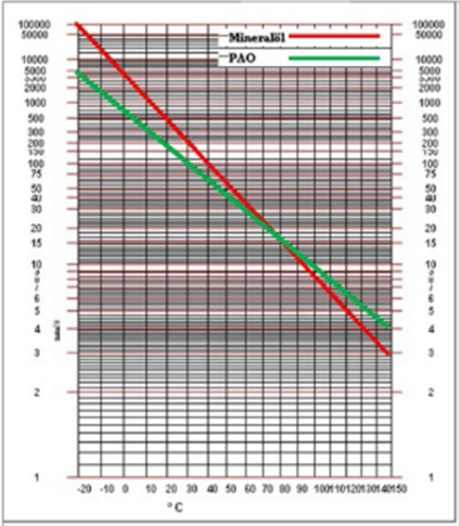Viscosity expresses the inner friction and the fluidity of the lubricant. It describes the hydrodynamic lubricity.
- Usually given as kinematic viscosity η at +40 °C
- Unit mm2/s (old: cSt)
- Accord. ASTM D7042, ASTM D445, DIN 51562, DIN 51659
- Conversion by the density ρ into the dynamic viscosity η possible v = η / ρ
- Depending on the temperature (see VT diagram) and pressure (only relevant above 500 bar)

Simplified selection criteria for the viscosity for an application:
- At high pressure → chose a higher viscosity
- At high rotational speed → chose a low viscosity
Impacts of a wrongly chosen viscosity:
To low
- Lubricating film is too thin
- Enhanced wear and reduced lifetime
To high
- Lubricant is unsuited for the conveying system and does not reach the lubrication points
- Deficient lubrication and wear
- Enhanced inner friction with increased energy consumption
The viscosity index is given by the temperature-viscosity relation (VT behaviour)
- No unit
- Determination acc. to DIN ISO 2909
- Allows calculation of kinematic viscosity at various temperatures
- Higher VI values are of advantage since temperature changes do not result in large viscosity changes i.e. less viscosity change at a varying temperature → Oil covers larger temperature range.

The density is the ration from mass to volume
ρ = m/V
- Unit g/cm3
- Crucial for the conversion of dynamic and kinematic viscosity
- Allows conversion of mass m to volume V and vice versa